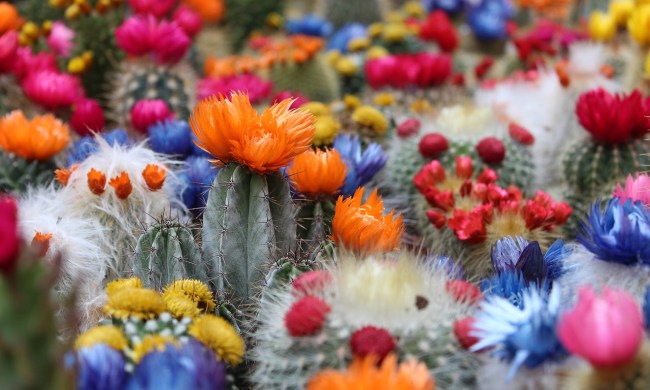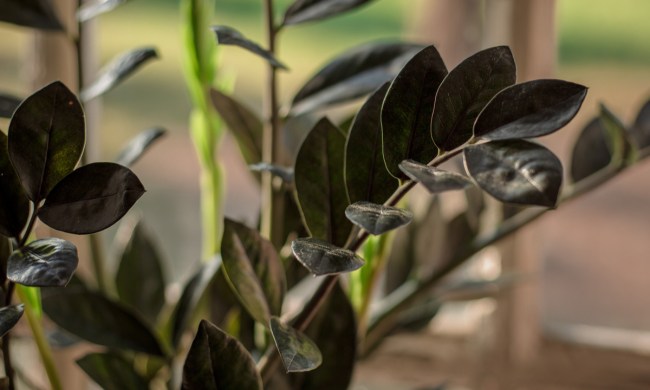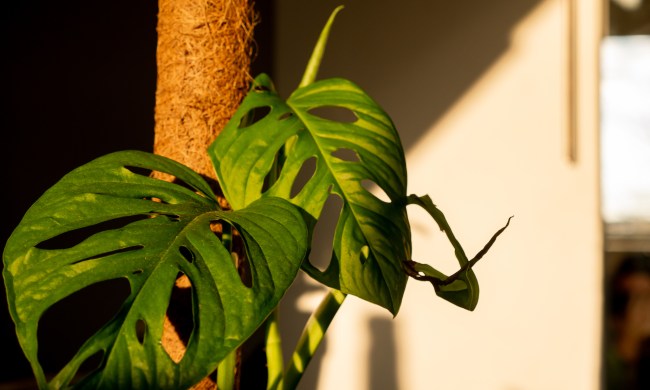In the world of houseplants, there are few plants more prized than monsteras. With their unique leaf shapes and impressive size, monstera plants are beloved by many. There are many types of monstera plants to choose from, but one popular monstera is the monstera albo. Currently a rare and expensive type of monstera, the monstera albo is in high demand because of its astoundingly beautiful leaves. Want to know what makes this plant so special and how to grow your own? We’ll answer all your questions in this guide to monstera albo plant care.
What makes monstera albo unique?

Monstera albo is a variegated monstera, with leaves that are a mix of white and green. Variegation is found in many plants, from pothos vines to holly bushes. However, monstera albo is still fairly rare. While it is becoming more widely available as time goes on, some suppliers have faced difficulties in propagating and cultivating these lovely plants. This is because the genetic mutation that causes the variegation is unpredictable, with some plants producing too many white leaves and others barely producing any.
The white portions of the leaves have no chlorophyll, meaning they cannot absorb sunlight to feed the plant. If a plant has too many white leaves, it will struggle to survive. However, if it doesn’t have enough, it isn’t as aesthetically pleasing and might not be sold.
Planting monstera albo

Like other types of monstera plants, monstera albo plants need light, airy, well-draining soil. Most gardeners use a mix of orchid bark and coir, sometimes with added perlite, compost, or worm castings to add nutrients and help keep the plant hydrated. If you don’t want to make your own mix, you can find ready-made monstera plant mixes in some gardening stores and online. Be sure to choose a container with proper drainage holes as well. Well-draining soil won’t do your plant any good if the water is stuck at the bottom of the pot.
Place your monstera albo in bright, indirect light. If you can, position your monstera albo so that more of the green leaves are receiving sun, since these are the leaves with chlorophyll. Since monstera albo can struggle to get enough light, it’s important to monitor your monstera plant to ensure it’s getting an average of at least six hours of sun daily. Avoid placing it in direct light, as this can burn leaves, causing them to turn brown. When in low light, monstera albo may begin to produce fewer white leaves to compensate as well.
Monstera albo care

Monstera albo care is similar to caring for other types of monstera, but they require a bit more attention due to their difficulty absorbing sunlight. If you’ve grown monstera before, you should be able to grow a monstera albo without major issues. If you’re a beginner, you can grow them as long as you’re patient and attentive. Keep your monstera albo plant warm, typically in the range of 65 to 80 degrees Fahrenheit, with moderate to high humidity.
Water your monstera albo when the soil is completely dry, and avoid watering it when the soil is still moist. When you water your plant, avoid getting the leaves wet, and water it until you see the water begin to drain out of the bottom of the pot. That’s how you know the soil is thoroughly saturated.
Fertilizer, similar to water, should be handled delicately. Too much can lead to fertilizer burn, while not enough can lead to an undersized and struggling plant. A balanced liquid fertilizer applied monthly or every other month during spring and summer will work, or you can add more compost or worm castings to the soil on a less frequent schedule if you want to remain all natural.
How to tell if your monstera albo is real

Due to the high demand and higher price tags on these gorgeous plants, there are some scammers out there hoping to take advantage of gardeners. If you’re looking at a listing and wondering if it’s real or not, or just bought a monstera albo and are hoping it’s not a fake, here’s what to look out for.
When buying online, look for common scammer red flags, such as prices that are significantly higher or lower than similar listings. If there’s no reasonable explanation given for the price difference, skip that listing. Look at reviews, seller ratings, or other forms of feedback as well.
However, there’s another type of plant scam to be wary of — chemically induced variegation. Unlike true variegation, this is a temporary pattern in the leaves that will fade over time. This is often used to create pink variegated plants, such as the now-infamous pink congo philodendron. True monstera albo plants will have variegated stems as well as leaves, while plants with chemically induced variegation will have solid-colored stems. The ultimate test is the test of time — chemically induced variegation rarely lasts long.
Monstera albo is a gorgeous plant that’s currently in high demand. Since they can be a bit pricey, it’s important to know how to take care of them. Of course, if you aren’t sure if monstera albo is the right fit for you, there are many other wonderful monstera varieties and variegated plants out there. As suppliers find better ways of growing monstera albo, they’ll become easier to find. While you wait, why not try another fantastic tropical plant?




